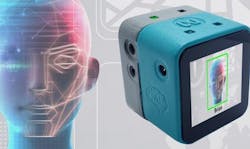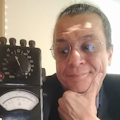Maxim Integrated's MAXREFDES178# camera cube reference design serves Artificial intelligence (AI) applications that previously were limited to those with the resources and deep pockets. The camera cube puts AI Vision in space- and cost-constrained applications like battery-powered edge devices, giving ultra-low-power IoT solutions hearing and vision. Highlighting the MAX78000 low-power microcontroller with neural network accelerator for audio and video, it also has the MAX32666 ultra-low power Bluetooth microcontroller and two MAX9867 audio CODECs. Provided in a compact form factor for AI applications such as facial identification and keyword recognition, the camera can also be used in low-power, cost-sensitive products like wearables.
he MAXREFDES178# camera cube enables time- and safety-critical applications to operate on even small batteries, using up to 1,000x less power for vision and hearing applications, compared to other embedded solutions. AI inferences running on the MAXREFDES178# show significant latency improvements, over 100x faster than on embedded microcontrollers. The 1.6in x 1.7in x 1.5in (41mm x 44mm x 39mm) solution is claimed to be up to 50% smaller than the next-smallest GPU-based processor, and doesn't require memories or complex power supplies.
To learn more about the MAXREFDES178# visit https://bit.ly/MAXREFDES178Product
To learn more about the MAX78000 visit https://bit.ly/MAX78000Product
To learn more about the MAX32666 visit https://bit.ly/MAX32666Product
To learn more about the MAX9867, visit https://bit.ly/MAX9867Product
About the Author
Alix Paultre
Editor-at-Large, Electronic Design
An Army veteran, Alix Paultre was a signals intelligence soldier on the East/West German border in the early ‘80s, and eventually wound up helping launch and run a publication on consumer electronics for the US military stationed in Europe. Alix first began in this industry in 1998 at Electronic Products magazine, and since then has worked for a variety of publications in the embedded electronic engineering space. Alix currently lives in Wiesbaden, Germany.
Also check out his YouTube watch-collecting channel, Talking Timepieces.

